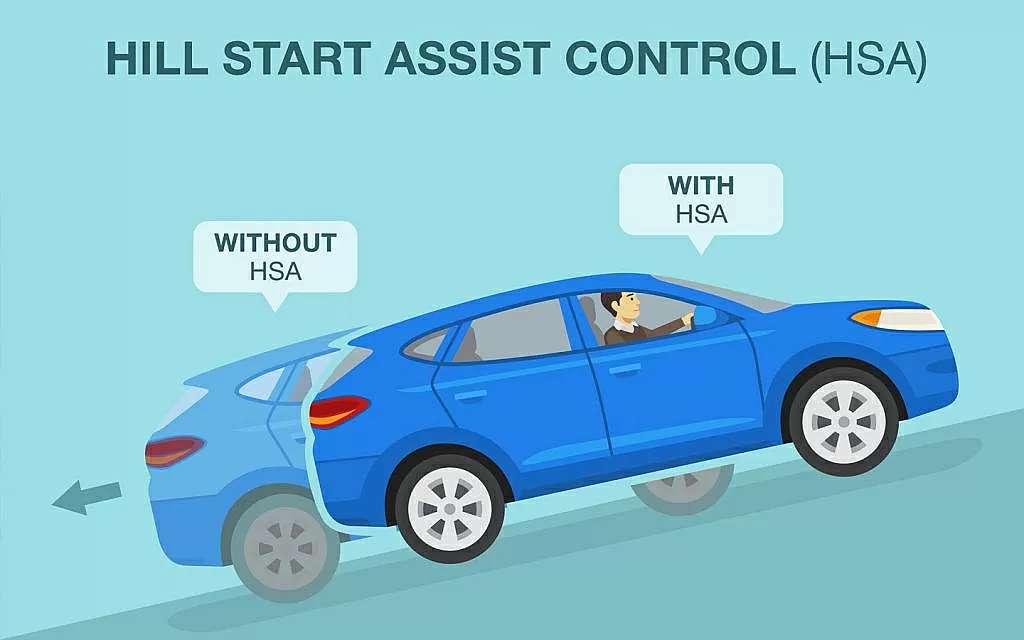How does a car’s hill start assist system work?


How does a car’s hill start assist system work?
Driving on hilly terrains can be a daunting task, especially when it comes to starting your car on an incline. The fear of rolling backward or stalling the engine can make even the most experienced drivers nervous. However, thanks to advancements in car technology, vehicles now come equipped with a hill start assist system to alleviate these concerns and enhance vehicle safety. In this article, we will delve into the details of how a car’s hill start assist system works, exploring its features and benefits.
Understanding Hill Start Assist
Hill start assist, also known as hill start control, is a driving feature designed to prevent a vehicle from rolling backward when starting on an incline. It is particularly useful in situations where you need to stop on a hill and then resume driving. This system is especially beneficial for drivers who are not confident in their ability to smoothly transition from the brake pedal to the accelerator pedal without rolling backward.
The Mechanics Behind Hill Start Assist
The hill start assist system utilizes a combination of sensors, the vehicle’s braking system, and the engine control unit (ECU) to ensure a smooth and controlled start on an incline. Here’s how it works:
1. Sensors: The system uses various sensors, such as the wheel speed sensors and the incline sensor, to detect when the vehicle is on an incline and determine the degree of incline.
2. Brake Pressure: When the system detects that the vehicle is on a hill, it automatically applies brake pressure to prevent the vehicle from rolling backward. This is done by keeping the brake engaged for a short period after the driver releases the brake pedal.
3. Engine Control Unit (ECU): The ECU plays a crucial role in the hill start assist system. It communicates with the sensors and the braking system to ensure a seamless transition from braking to acceleration. The ECU monitors the vehicle’s speed and adjusts the brake pressure accordingly to prevent rolling backward.
Benefits of Hill Start Assist
The hill start assist system offers several benefits to drivers, including:
1. Enhanced Safety: By preventing the vehicle from rolling backward, the system reduces the risk of accidents and collisions, especially in situations where there is traffic behind the vehicle.
2. Convenience: Hill start assist makes it easier for drivers to start their vehicles on inclines without the need for excessive use of the clutch or accelerator pedal. This feature is particularly useful in heavy traffic or when driving in hilly areas.
3. Reduced Wear and Tear: The system helps reduce wear and tear on the clutch and other drivetrain components by minimizing the need for excessive clutch slipping during hill starts.
4. Confidence Boost: For less experienced drivers or those who are not comfortable with manual transmissions, hill start assist provides a confidence boost by eliminating the fear of rolling backward or stalling the engine.
Limitations and Considerations
While hill start assist is a valuable feature, it is important to note its limitations and considerations:
1. Manual vs. Automatic Transmissions: Hill start assist is more commonly found in vehicles with manual transmissions. However, some automatic transmissions also offer similar features, such as a hill hold function.
2. Steep Inclines: While the system is effective on moderate inclines, it may have limitations on steep hills. In such cases, it is essential to use additional caution and rely on proper driving techniques.
3. Driver Responsibility: It is crucial for drivers to understand that hill start assist is an aid and not a substitute for proper driving techniques. It is still the driver’s responsibility to use the accelerator pedal and shift gears appropriately to ensure a smooth start on an incline.
In conclusion, a car’s hill start assist system is a valuable driving feature that enhances vehicle safety and provides convenience to drivers. By utilizing sensors, the braking system, and the ECU, the system prevents the vehicle from rolling backward when starting on an incline. It offers benefits such as enhanced safety, reduced wear and tear, and increased driver confidence. However, it is important to understand the limitations of the system and remember that it is not a substitute for proper driving techniques.
Recent Posts
How do I create an engaging and informative online quiz or assessment?
Creating an engaging and informative online quiz or assessment can be a powerful tool for… Read More
What are the most effective methods for managing and reducing work-related stress in the hospitality industry?
Work-related stress is a common issue in the hospitality industry, where employees often face long… Read More
How can I improve my assertiveness and communication skills in a leadership position?
In a leadership position, assertiveness and effective communication skills are crucial for success. Being able… Read More
What are the key elements of a successful employee recognition and rewards program?
Employee recognition and rewards programs play a crucial role in motivating and engaging employees, as… Read More
How do I effectively manage and respond to customer feedback and reviews?
Customer feedback and online reviews play a crucial role in shaping a company's reputation and… Read More
What are the best strategies for effective time management as a stay-at-home parent?
Effective time management is crucial for stay-at-home parents who juggle multiple responsibilities on a daily… Read More